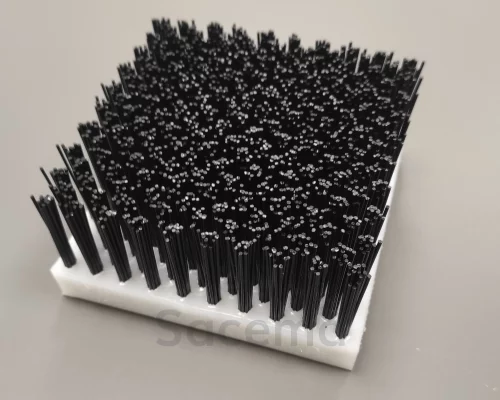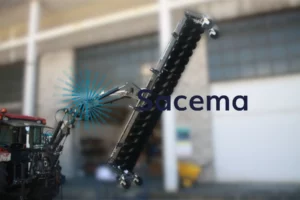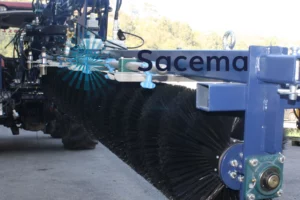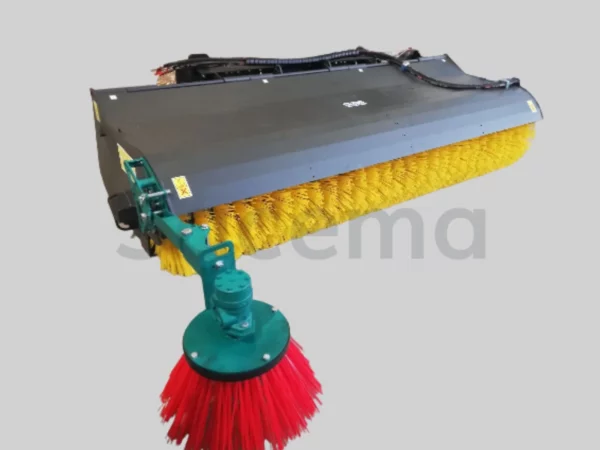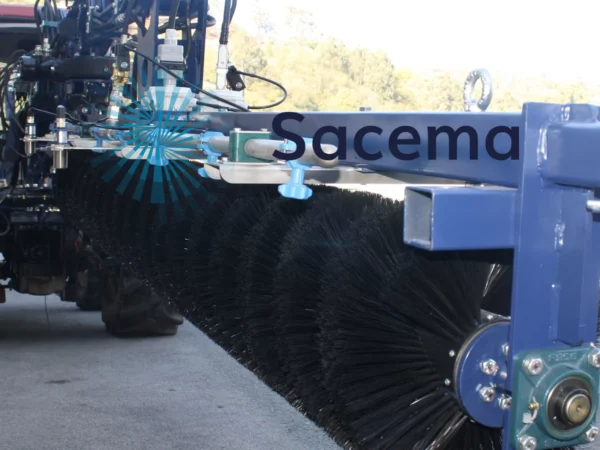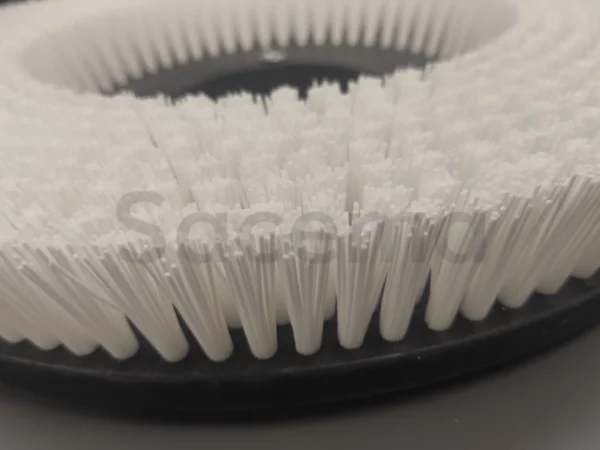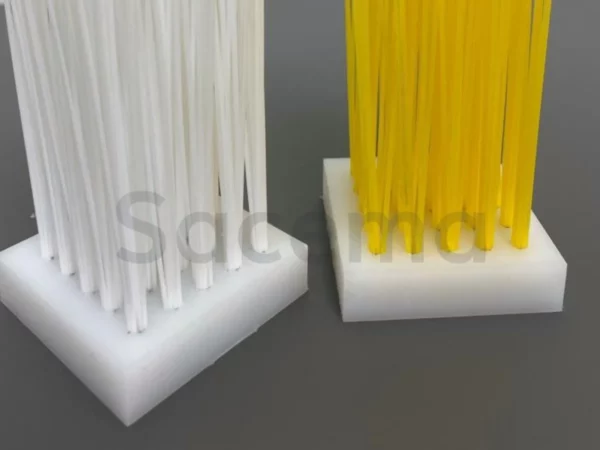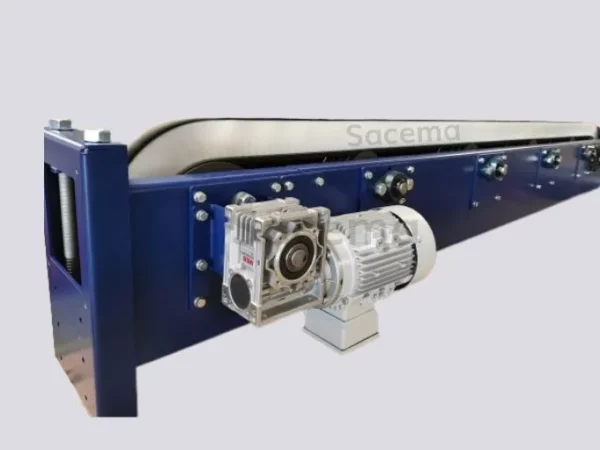In the industry, the demand for technical brushes that can withstand extreme temperatures is constant. Whether in high or low-temperature environments, finding the right materials is a crucial challenge. In this blog, we will explore the challenges and solutions for industrial brushes in extreme conditions.
High Temperatures: A Challenge for Technical Brushes
In many cases, selecting suitable technical materials for the manufacture of these brushes poses a real challenge, as high temperatures are a weak point for plastics, which tend to degrade more quickly than other materials when exposed to high temperatures.
However, technical brushes play important roles in industrial processes, and if such processes are carried out near ovens or heat sources, it is essential to develop suitable brushes for these specific working conditions.
Firstly, it is crucial to accurately determine the temperature to which the technical brush will be exposed since exceeding 120°C implies a significant increase in costs.
It is common for engineers to apply safety factors to calculations, which often leads to demands for temperature resistance for industrial brushes that they will never reach in practice.
It is essential to measure the actual temperature of the place where the industrial technical brush will be installed, not just the temperature of the hot spot inside ovens or burners, as there may be a significant thermal difference between the two places.
Secondly, it is important to distinguish whether the high temperature to which the brushes will be subjected will be for a short period or if it will be continuous or prolonged working temperature.
Once the working temperatures and their duration are correctly defined, we can delve into the development of technical brushes, starting with more common materials and advancing to high-performance materials.
The first option is to opt for metallic technical brushes, either with wire filaments or bodies (strips), since their thermal resistance is in the hundreds of degrees.
However, these options are generally limited to strip-type brushes like strips and applications involving metals, which are less common compared to synthetic filaments. Therefore, we will focus on brushes with plastic filaments.
From the outset, we must rule out basic plastic filaments such as polypropylene or polyethylene, which do not reach 100°C.
The first filaments that begin to have acceptable behavior are PA6.6, which outperforms its PA6, PA6.10, and PA6.12 variants, as well as PBT.
Both the basic ones, PA6 and PBT, and the more technical ones, like PA6.10 and PA6.12, can withstand continuous temperatures between 80 and 100°C, with temperature peaks during short periods between 140 and 180°C.
In contrast, an economical option for manufacturing technical brushes for high temperatures is PA6.6, which can withstand between 80 and 120°C continuously, with peaks of 170 to 200°C during short periods.
When temperatures exceed these limits, it is necessary to resort to high-performance filaments, which implies increasing the budget and having fewer available section options.
Among the so-called high-performance technical filaments, the first and most economical is Nylon HT 150 Green Line, a stabilized polyamide with a 70% renewable base, suitable for use in food industries.
This nylon can reach 150°C continuously and 200°C in short periods.
Above, there are only two options, both with high prices.
The Pekalon II, a polyphenylene sulfide resistant to most chemicals and suitable for contact with food, can reach 180°C continuously, with peaks of up to 235°C.
The most technical version is PEEK, a polyetheretherketone, which can withstand up to 250°C continuously, with peaks of 280°C during short periods, besides being resistant to chemical attacks and having the FDA compatibility certificate.
Regarding brushes made with natural filaments, there are surprises, as some can withstand high temperatures.
For example, technical brushes with pig and horsehair filaments can withstand up to 140°C, followed by goat hair with 150°C, with Tampico vegetable fiber being the most resistant natural filament to high temperatures, with 160°C.
While filaments are the most important part of technical brushes, the bases with which they are made must also be able to withstand the same temperatures as the filaments.
In this aspect, we have a greater variety than with filaments, since plates and bars are the usual formats of plastics in the industry.
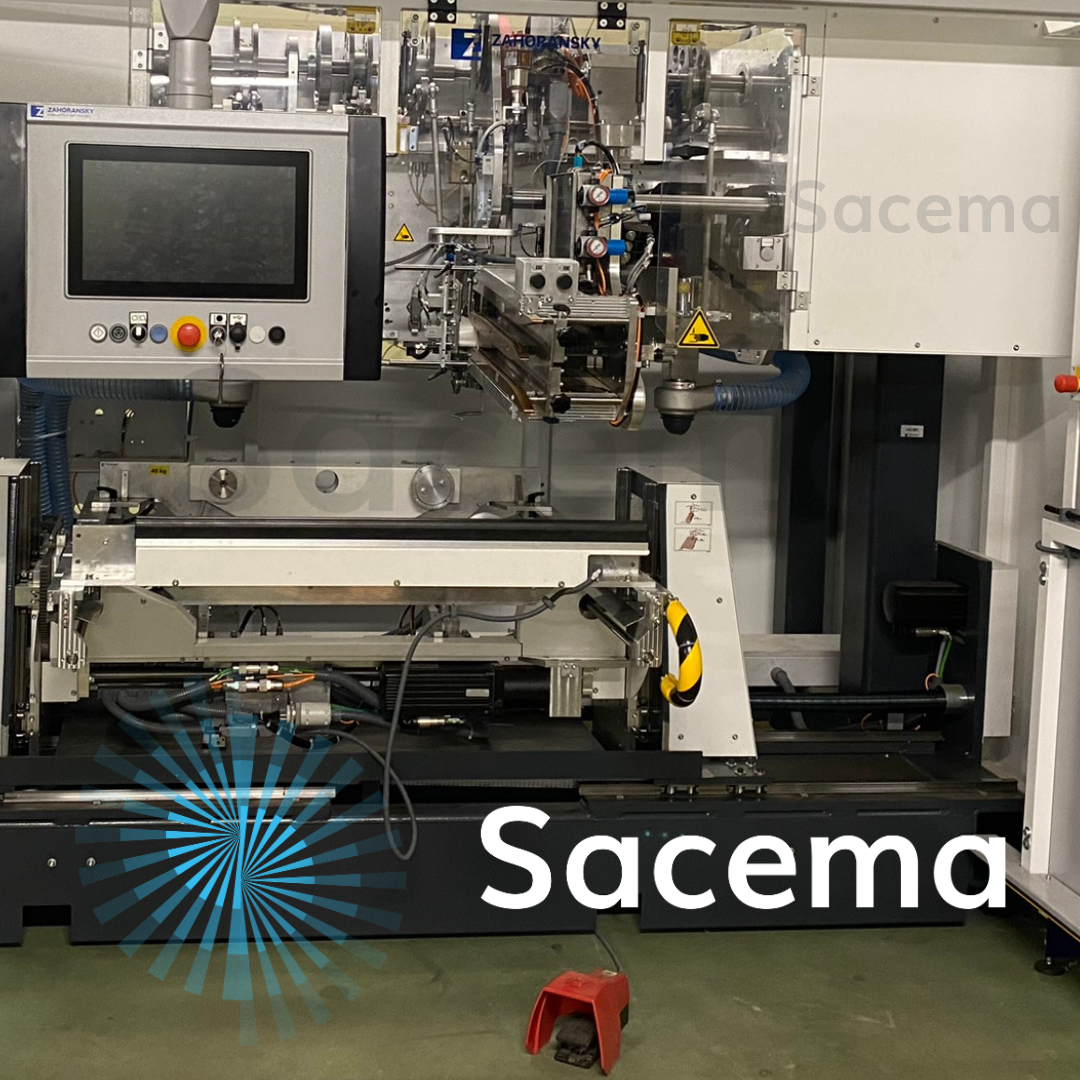
Low Temperatures: Another Challenge for Technical Brushes
Although most requests and inquiries to integrate technical brushes focus on high-temperature resistance, there is a part of them that focuses on the opposite extreme: low temperatures.
As with high temperatures, in many cases, selecting technical materials for the manufacture of brushes capable of withstanding very low temperatures is a real challenge.
This challenge is because low temperature represents a weak point for plastics, which tend to crack and become brittle when exposed to temperatures below their minimum resistance threshold.
However, technical brushes play important roles in industrial processes, and if these processes are carried out near refrigerators or cold sources, it is crucial to develop suitable brushes for those specific working conditions.
While most examples come from chemical processes and the food industry, they also apply to brushes used outdoors and in countries or regions with extreme climates.
Firstly, it is essential to determine correctly the temperature to which the technical brush will be exposed since exceeding the threshold of -20°C implies an exponential monetary cost, as with high temperatures.
It is crucial to measure the actual temperature of the place where the industrial technical brush will be installed, not just the temperature of the coldest point inside the refrigerator, as there may be a significant thermal difference between the two sites.
Secondly, it is also important to distinguish whether the low temperature to which the technical brushes will be exposed will be for a short period or if it will be continuous or prolonged working temperature.
Once the working temperatures and their duration are correctly defined, the development of technical brushes can proceed, starting with more common materials and advancing to high-performance materials.
The first option for very low temperatures is to opt for metallic technical brushes, which can withstand up to -75 degrees Celsius.
However, these options are mainly limited to strip-type brushes, such as strips, and to applications where metals are used, which are less common compared to synthetic filaments. Therefore, we will focus on brushes with plastic filaments.
From the beginning, the most basic plastic filaments, such as polypropylene or polyethylene, which degrade at temperatures between -10°C and -15°C, must be ruled out.
In contrast to high temperatures, polyamides show different behavior in cold climates: the higher their quality, the better they resist the cold.
For example, PA6 and PBT can withstand up to -20°C, PA6.6 up to -15°C, and PA6.10 and PA6.12 can go down to -30°C with stability.
For even lower temperatures, high-performance filaments are required.
Among them, Nylon HT 150 Green Line is an economical option that can withstand up to -30°C, matching the resistance of PA6.12.
However, for more extreme temperatures, there are two more expensive options: Pekalon II, which can withstand up to -40°C and is an excellent chemical resistant, and PEEK, which can go down to -50°C, although its price is significantly higher, being at least 35 times more expensive than PA6.
Conclusions
In conclusion, in those environmental conditions of extreme temperatures, we will select those materials that adapt stably and safely to each situation.
Whether facing high temperatures near industrial ovens or low temperatures in cold environments, the choice of resistant and durable materials is key to the performance and efficiency of technical brushes.

